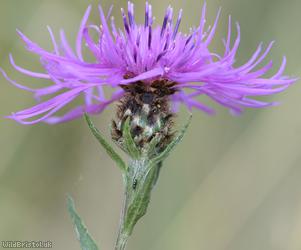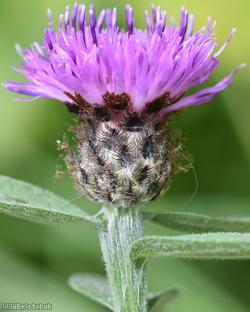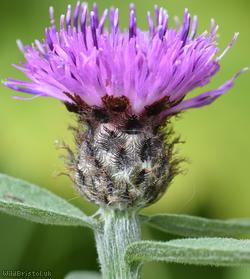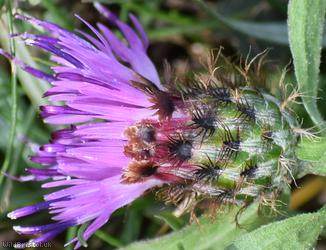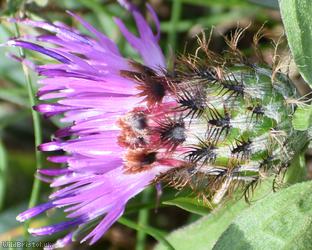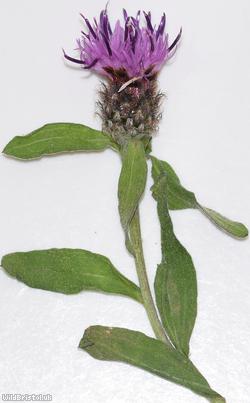Slender Knapweed - Centaurea debeauxii
Favourite Photos
Species Description
Widespread and fairly frequent in the South becoming less so in the North. It is under-recorded. Habitat includes: Well-drained, calcareous grassy places such as limestone / chalk downland, grassland, roadside verges, coasts, old quarries, wasteland etc. Growing habit: Perennial. Height: Up to 80 cm. Flowers: June to November. Other names include: Chalk Knapweed, Meadow Knapweed. Ours is C. debeauxii ssp. debeauxii.
Stace 4:
Centaurea debeauxii Gren. & Godr. (C. nemoralis Jord., C. nigra ssp. nemoralis (Jord.) Gremli, C. debeauxii ssp. nemoralis (Jord.) Dostál, ssp. thuillieri Dostál) - Chalk Knapweed.
Erect perennial to 80cm; differs from C. nigra in often more deeply lobed leaves; the bracted part of the capitulum only partially (not completely) covered by the distal pectinate parts of the phyllaries so that the proximal undivided parts are partially revealed (not fully obscured); pappus 0 or of short hairs; 2n=44. Native; grassy places, rough ground, waysides, mostly on light, often calcareous soils; distribution uncertain owing to confusion with C. nigra, but common in South Britain and rare or absent in North England and Scotland. Plants with pseudo-radiate capitula are common; they occur with non-radiate plants (ssp. nemoralis) and are not worth recognition as ssp. thuillieri.
Key:
- Apical portion of outer phyllaries dark brown to black, deeply and very regularly toothed; pappus present or 0
- Capitula (excluding flowers) mostly 9-14mm across; peduncles slightly swollen immediately under the capitula; central undivided part of each phyllary lanceolate in shape
